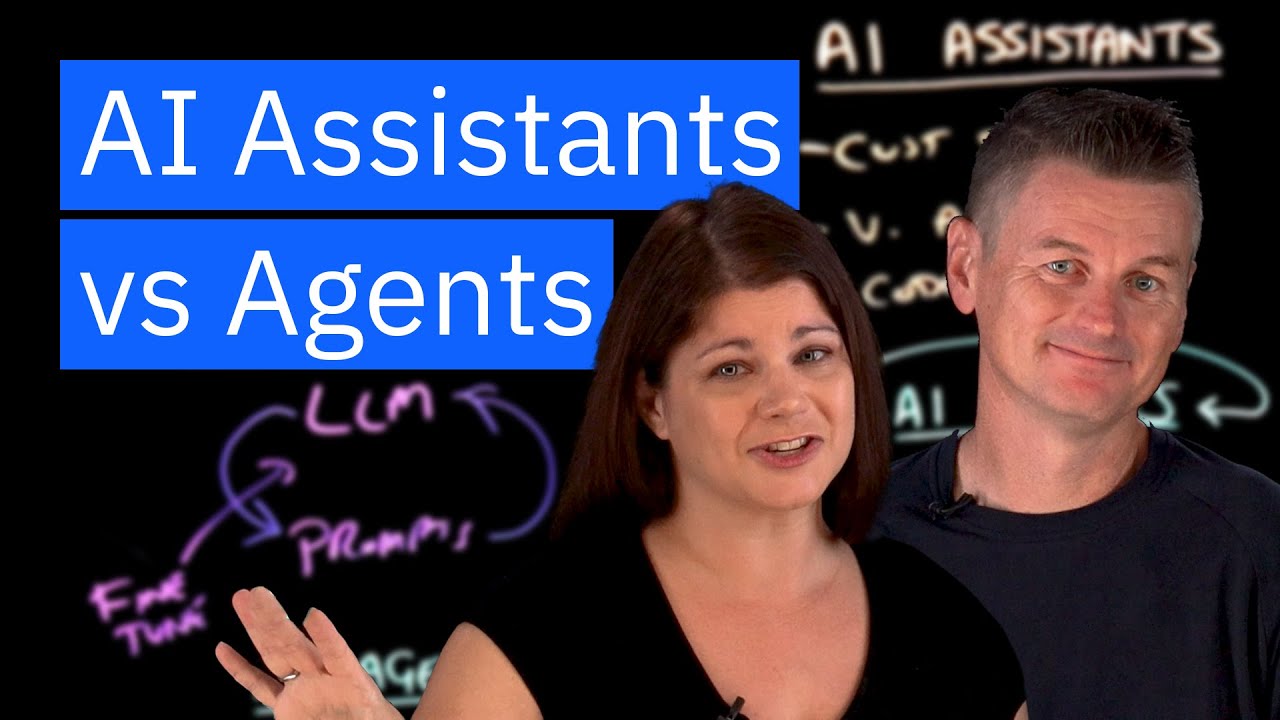The video contrasts AI Assistants, which are reactive tools that respond to user commands for routine tasks, with AI Agents, which are proactive and autonomous, capable of independently achieving complex goals. It highlights their distinct roles in the future of work, emphasizing that while Assistants manage day-to-day tasks, Agents tackle more strategic challenges, with potential for greater synergy as AI technology evolves.
The video contrasts two types of artificial intelligence: AI Assistants and AI Agents, drawing parallels to the roles of personal assistants and agents in the entertainment industry. AI Assistants are described as reactive tools that wait for user commands, similar to how personal assistants handle scheduling and routine tasks. They rely on prompts from users to perform actions, making them effective for organizing information and responding to queries. Examples include Siri, Alexa, and ChatGPT, which utilize large language models (LLMs) to understand and execute user instructions.
In contrast, AI Agents are proactive and autonomous, capable of taking the initiative to achieve specific goals without constant user input. While they also utilize LLMs, they require only an initial prompt to get started, after which they can independently design workflows and make decisions based on external data and tools. This allows AI Agents to tackle more complex tasks and drive strategic outcomes, functioning more like strategists than mere helpers.
The video highlights the different use cases for AI Assistants and Agents. Assistants excel in routine tasks such as customer service and virtual assistance, where they can quickly analyze data and respond to queries, thereby reducing the burden of repetitive tasks on humans. On the other hand, AI Agents thrive in strategic roles, such as automated trading and network monitoring, where they analyze vast datasets to predict market behavior and execute trades in real time.
Despite their strengths, both AI Assistants and Agents face limitations, such as brittleness and the potential for feedback loops. These issues can lead to errors or require significant computational resources, making them costly to operate without supervision. The video emphasizes the importance of monitoring AI outputs to ensure reliability and effectiveness, as both types of AI continue to evolve and improve.
In conclusion, the video underscores that AI Assistants and Agents serve distinct but complementary roles in the future of work. While Assistants handle day-to-day tasks, Agents take on more complex challenges autonomously. As AI technology advances, there is potential for greater synergy between the two, allowing them to combine their strengths to address both simple and intricate problems effectively.
